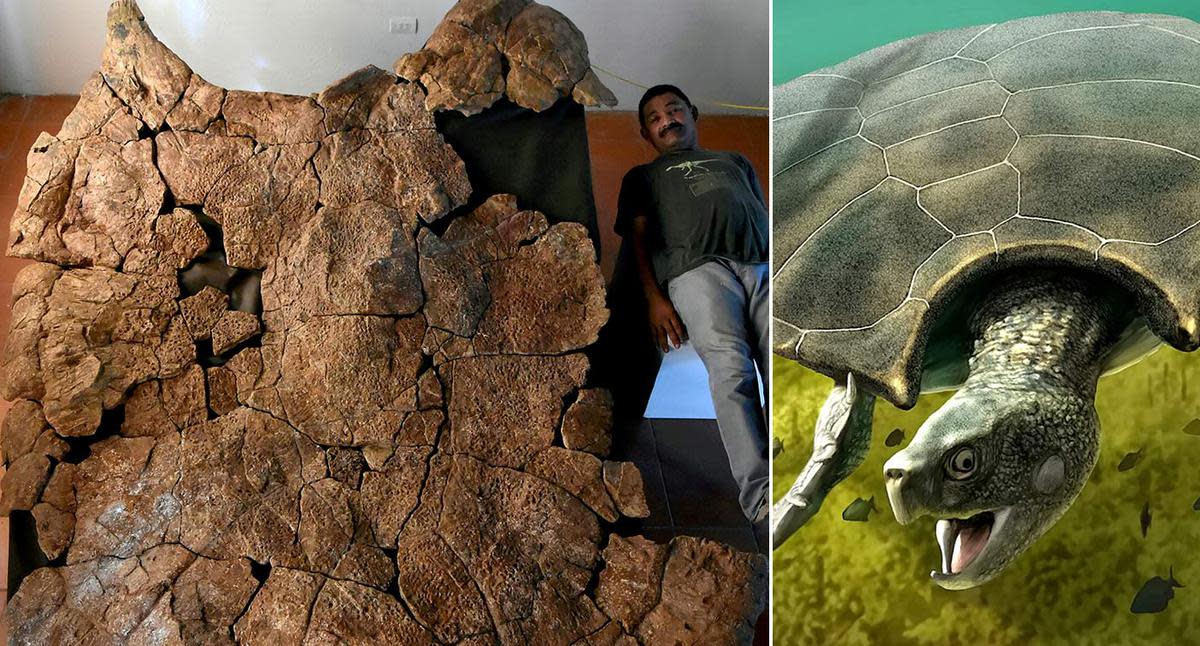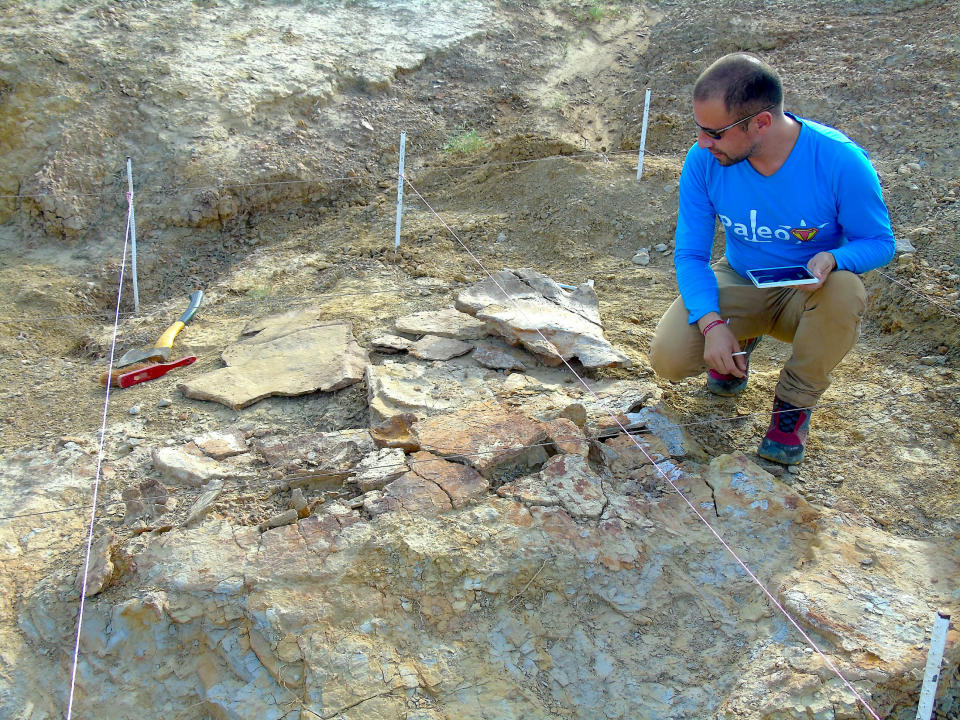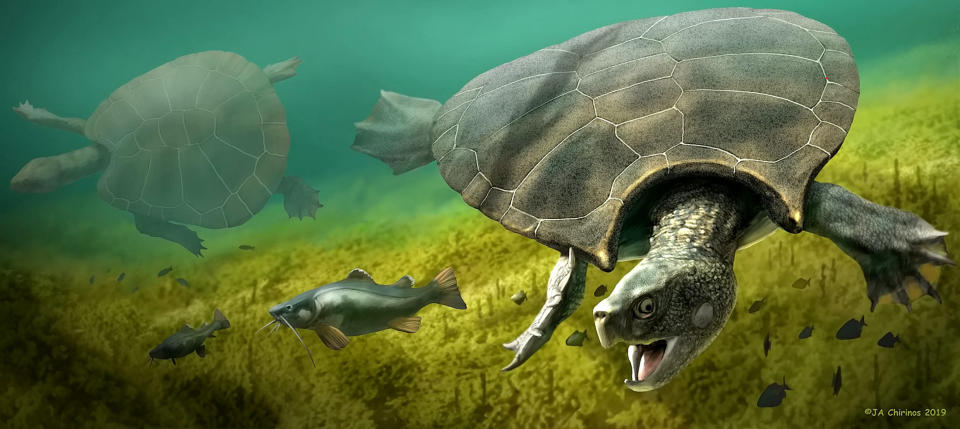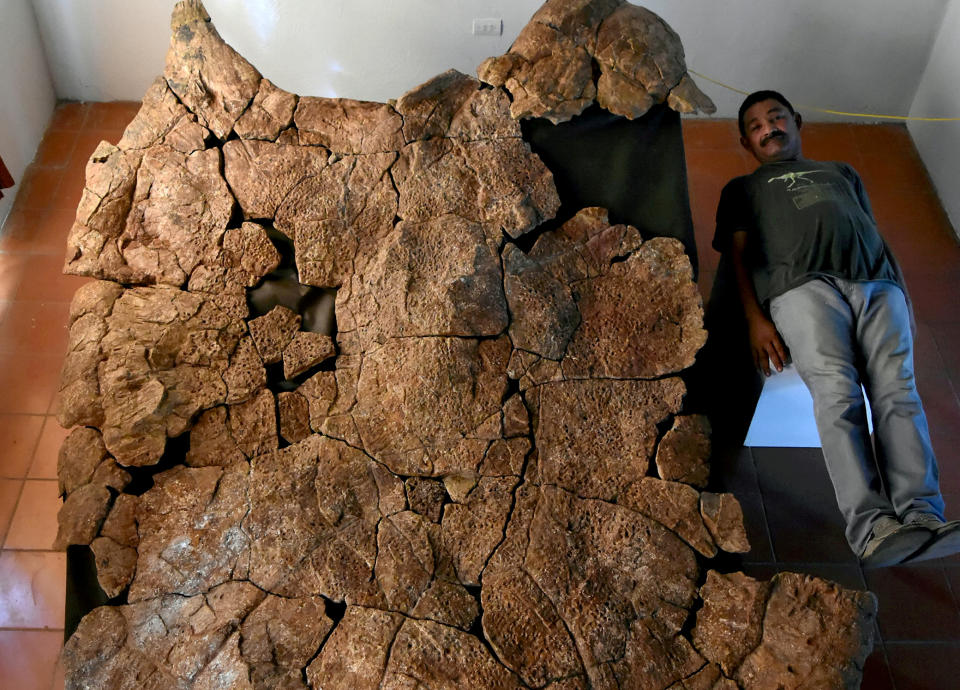Biggest turtle ever had 8ft shell weighing more than a tonne

The biggest turtle ever to have lived had a massive eight-foot-long shell and weighed more than a tonne, according to a new study.
The beast named Stupendemys geographicus roamed modern-day Colombia ten million years ago and may have weaponised its shell in fights with enemies.
Stupendemys was unearthed at an animal graveyard known as the La Venta archaeological site in the Tatacoa Desert of Colombia.
At the time of its existence, South America was a 'lost world' of bizarre oversized creatures - including enormous rats and alligators.

The turtle discovery is based on an analysis of several new shell specimens and a lower jaw - the first discovery of its kind in the fossil record.
Lead author Professor Edwin Cadena said "The now-extinct animal is the largest land turtle of all time.
“The remains include the biggest complete turtle shell ever identified.
He added: "It is almost 100 times the size of its closest living relative, the Amazon river turtle Peltocephalus dumerilianus, and twice that of the largest turtle today, the marine leatherback Dermochelys coriacea."
Read more: Giant prehistoric rat the size of a human roamed Earth 10 million years ago

The findings, published in the journal Science Advances, significantly expand the known range of Stupendemys which walked around northern South America during the late Miocene.
They also indicate it was the lone giant species in the northern Neotropics.
It was first identified in 1976 from remains discovered in Venezuela.
Prof Cadena, a palaeontologist at the University of Rosario in Bogota, said knowledge of these reptilian giants has stalled due to a lack of full specimens.
To uncover more information about the turtle's prehistoric life, his team conducted detailed anatomical analyses on specimens dating from 1994 expeditions, as well as from more recent finds.
They found males of this species sported unique horn-like shells at the front of their hard upper shells.
Read more: Dog remained by side of owner killed by falling tree branch during Storm Ciara

Prof Cadena said: "This is a feature that may have served to protect their massive skulls when engaged in combat with other males."
The authors also suggested Stupendemys may have achieved such unparalleled size due to the presence of warm, extensive wetland and lake habitats.
Prof Cadena added: "Massive crocodiles may also have influenced the turtle's evolution, with bite marks on some specimens - including a lone crocodile tooth protruding from a carapace.
"This suggests they needed protection from other lurking giants."

